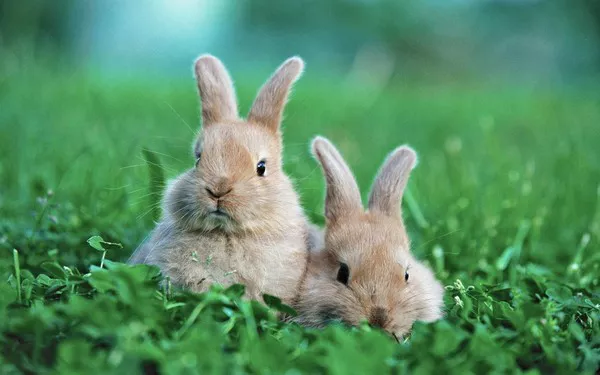Rabbits, beloved for their gentle demeanor and adorable appearance, are common pets worldwide. For rabbit breeders and enthusiasts, understanding the reproductive cycle and recognizing signs of impending birth is crucial for ensuring the health and safety of both the mother and her offspring. In this comprehensive guide, we will explore the stages of rabbit pregnancy, signs of impending labor, and how to best support the birthing process.
Understanding Rabbit Pregnancy
Rabbits, like many other mammals, have a relatively short gestation period compared to larger animals such as dogs or cats. On average, rabbit pregnancies last between 28 to 31 days, with slight variations depending on the breed and individual rabbit.
During the first few weeks of pregnancy, it can be challenging to detect signs of gestation in rabbits. Unlike some other mammals, rabbits do not typically display obvious physical changes early on. However, attentive breeders may notice subtle differences in behavior and appetite as the pregnancy progresses.
Signs of Pregnancy in Rabbits
Nesting Behavior: As the due date approaches, pregnant rabbits may exhibit nesting behavior, where they gather bedding material and arrange it in their enclosure. This instinctual behavior prepares the mother for giving birth and provides a safe, comfortable environment for her offspring.
Increased Appetite: Pregnant rabbits often experience an increase in appetite as their bodies work to support the growing fetuses. Breeders should ensure that pregnant rabbits have access to a balanced diet rich in fiber, fresh vegetables, and quality hay to meet their nutritional needs.
Changes in Behavior: Some pregnant rabbits may become more docile or seek out solitude as they approach labor. Others may display signs of restlessness or agitation. Observing changes in behavior can help breeders anticipate the onset of labor.
Enlarged Abdomen: In the later stages of pregnancy, a rabbit’s abdomen may visibly swell as the developing fetuses grow. Careful palpation of the abdomen may also allow breeders to feel the movement of the unborn kits.
Preparing for Birth
As the expected due date approaches, it’s essential to prepare a suitable birthing environment for the pregnant rabbit. This includes providing a nesting box filled with clean, soft bedding material such as hay or shredded paper. The nesting box should be placed in a quiet, secluded area of the rabbit’s enclosure to minimize stress during labor.
Additionally, breeders should ensure that they have necessary supplies on hand, including clean towels, scissors for cutting umbilical cords, and a warm water bottle or heating pad to help maintain the kits’ body temperature after birth.
Signs of Impending Labor
Nesting Behavior Intensifies: In the hours leading up to birth, the pregnant rabbit may become increasingly focused on nesting, spending more time arranging bedding and preparing the nest for her kits.
Restlessness: Some rabbits may exhibit signs of restlessness or pacing as they experience early contractions. Others may seek out the nesting box and begin to make preparations for giving birth.
See Also:Assisting Your Rabbit Through Labor: A Comprehensive Guide
Loss of Appetite: As labor progresses, the pregnant rabbit may lose interest in food and water as she focuses her energy on the birthing process. It’s essential to monitor her closely and ensure she remains hydrated throughout labor.
Visible Contractions: As the rabbit enters active labor, she will experience visible contractions as her body works to expel the kits. Breeders may observe the rabbit straining or pushing, accompanied by vocalizations or heavy breathing.
The Birthing Process
Once active labor begins, the birthing process typically progresses quickly in rabbits. The mother will deliver each kit individually, usually within a few minutes of each other. As each kit is born, the mother will instinctively break open the amniotic sac, clean the kit, and sever the umbilical cord with her teeth.
Breeders should refrain from intervening unless absolutely necessary, as excessive handling or interference can stress the mother and disrupt the natural birthing process. However, it’s essential to closely monitor the mother and kits to ensure that each kit is breathing and nursing properly after birth.
Aftercare for Mother and Kits
After the last kit is born, the mother will continue to clean and care for her offspring. Breeders should provide ample food, water, and a warm, quiet environment to support the mother’s recovery and bonding with her kits.
It’s crucial to check each kit individually to ensure they are nursing and gaining weight in the days following birth. Any signs of weakness, lethargy, or failure to thrive should be promptly addressed by a veterinarian experienced in rabbit care.
Conclusion
Understanding the signs and stages of rabbit pregnancy is essential for rabbit breeders and enthusiasts alike. By recognizing the subtle cues of impending labor and providing appropriate care and support during the birthing process, breeders can help ensure the health and well-being of both the mother and her offspring. With proper preparation and attentive monitoring, welcoming a new litter of baby rabbits into the world can be a rewarding and joyous experience for all involved.
Related Topics:

























